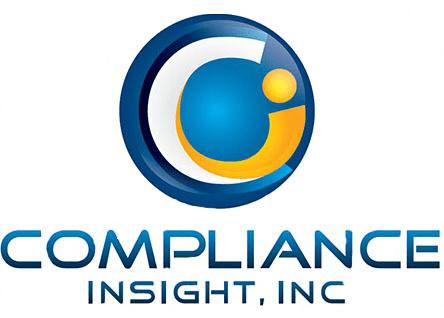Artificial Intelligence (AI)-supported real-time monitoring and advanced data techniques provide many benefits in modern manufacturing operations. These include maintaining materials inventory, troubleshooting production bottlenecks, maintaining instruments in operating order, avoiding product quality excursions, understanding scrap rates, meeting promised delivery dates, and more. The power and potential promised by digital techniques have been following the now classic Hype Cycle for Emerging Technologies [Figure 1]. Having passed the Peak of Inflated Expectations and Trough of Disillusionment we now find ourselves in the Slope of Enlightenment where such maturing applications as paperless records, digital twins, and enterprise Manufacturing Execution Systems (MES) are now truly providing measurable benefits. AI and Machine Learning (ML) algorithms can now effectively aid in the discovery of previously unknown processes, products, and workflow patterns, as well as interpret shifts in real-time manufacturing data preventing excursions.

Figure 1. Cycle of Emerging Technologies
Source: Gartner Research’s Hype Cycle diagram
AI is proving itself powerful in the multi-trillion-dollar Medical Device (MD) industry, largely because AI can be part of the medical device itself. AI is becoming powerful in MD product design, prototyping, development, and production as well as becoming a major component of the device itself.In considering AI as a product, we might take diabetes management as an example. We know the value of measuring blood glucose levels in determining insulin needs. But AI can now provide a structured examination of real-time multivariate and multiple univariate data from the patient. Produced by newer monitoring devices, these data reveal patient-specific correlations between such variables as food intake, heart and respiration rate, blood pressure, glucose levels, and insulin dosing. One can easily see how using such AI assisted data analysis can support predictive models that will suggest causative relationships between these variables that are helpful in controlling the disease.
Although AI adoption seems to be ahead within specific areas of medical devices, this technology is starting to crystallize and become more widely implemented within the Pharma industry. Let’s explore how Pharma is using AI today.
AI-empowered Enterprise Resource Planning (ERP), or Intelligent ERP, offers enhanced capability in product design and creation, optimized production processes, and automated materials management. Intelligent ERP better manages day-to-day procedures, reducing operating costs, and increasing the productivity of the manufacturing cycle. It affects project management, supply chain management, and manufacturing operations.
AI-empowered Asset Performance Management (APM), including digital twin technology, is an electronic, virtual representation of physical mechanical equipment and operational processes, which improves Application Programming Interfaces.
AI-empowered Process Development: In such contexts as generative design software it creates optimal designs from sets of system design requirements and offers users more than the traditional functionality of CAD software. It can dynamically accept human-developed inputs of system requirements on forces, materials, and costs, as well as from existing processes, which can either be considered proposals for further iterations, or as final proposals for use. Beyond budgets, performance and time, information in the design briefs can include such parameters as the environmental footprint of production resources. AI-empowered digital twins can be employed to address optimization of such operational consequences as water consumption, carbon emission, and single-use material load, as well as the environmental burden trade-offs in process design and adjustments.
AI-empowered Product Development includes supporting improvements to scale-down models, high-throughput instruments, automations, and advanced Design of Experiment (DoE) algorithms. The speed and dynamic nature of parameter adjustment allows engineers to readily interact with the programs to rapidly create optimized product designs. The algorithm examines all possible permutations and generates optimal solutions, enabling, e.g., the production of graphical representations of design solutions.
AI-empowered Process Control has evolved from analog approaches over the past 50 years, when early single-loop Proportional-Integral-Derivative (PID) control was improved by adding such features as dead time and dynamic compensation, feed forward, and auto-tuning. Process control engineers will soon optimize operations comprehensively using such advances as model-based, networked multivariable unit operations controllers. AI will enable multivariable control, which allows the consideration of more than one control objective at the same time. Autonomous trucks, driving from New York to San Francisco are an example of this. Combined with a cloud-based data processing framework and automation, AI-empowered process control can generate an automatic response with manipulated variables to predictions based upon true process understanding.
AI-empowered Quality Improvement and control can alert operators to current or projected anomalies or change vectors in measured values and provide cogent warnings of potential deviations affecting product quality. Regardless of the number or origin of anticipated parameter excursions, their combination can be analyzed for consequences to production efficiency and product quality and eliminate them in their early stages. For example, machine vision is an AI application that digests the images provided by cameras in a production suite. It can monitor material suitability, production set-up, process conditions, as well as intermediate or final product quality.
Conclusion
Artificial intelligence is now fulfilling its promise of supporting a sea-change in the speed, efficiency, and quality of manufacturing. The next blogs will drill a little deeper into these developments.

Figure 2. Computer vision-based quality control
Source: Capgemini Research Institute
Tagged: AI, Machine Learning, Manufacturing, Medical Device, Pharma
https://www.xavierhealth.org/ai-blog/2021/5/25
